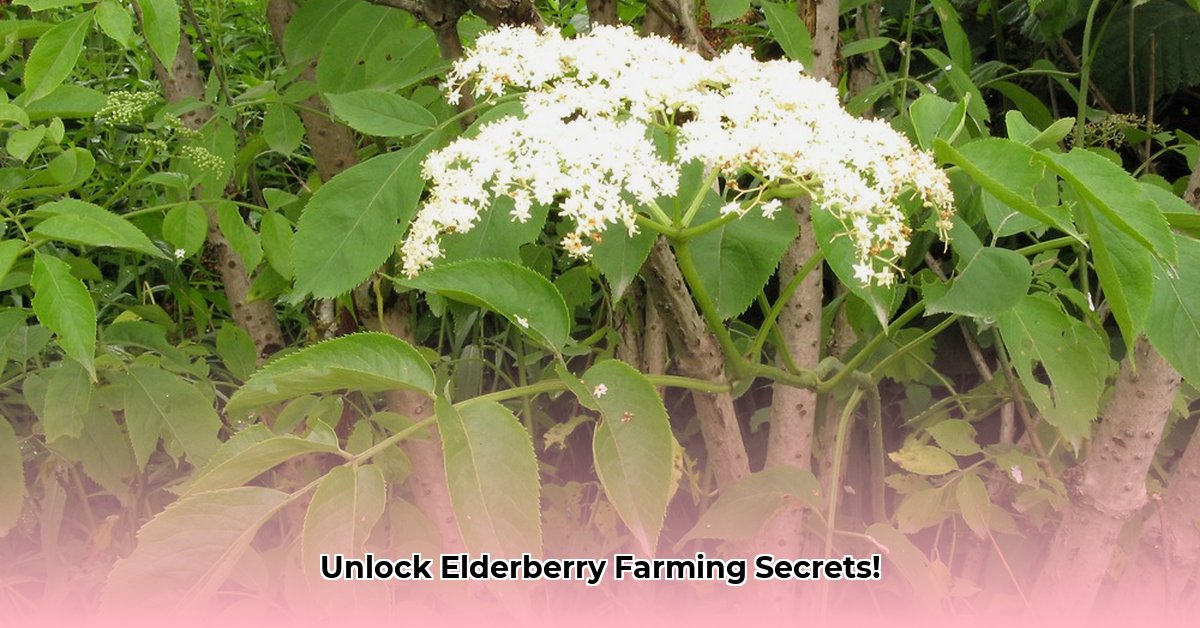
Eish, growing Sambucus nigra, or black elderberry, isn't just about chucking some seeds in the ground and hoping for the best. This vigorous plant, while a treasure trove of delicious berries, can be a bit of a handful! This guide will equip you, whether you're a seasoned farmer or a keen beginner, with the knowledge and practical steps to cultivate a thriving elderberry patch sustainably. For more farming tips, check out this useful resource.
Getting Started: Understanding Sambucus nigra
This lekker plant is known for its abundant berry yields, but it also has a mind of its own. Its prolific spreading habit (through suckers and seeds), while beneficial for harvesting, can make it invasive if not managed properly. Plus, it's a bit of a drama queen, susceptible to pests and diseases. So, let's get into how to manage this oulike plant effectively.
Site Selection and Soil Preparation: Laying the Foundation for Success
Choosing the right spot is crucial. Elderberries love sunshine (full sun to partial shade is ideal) and well-drained soil. Poor drainage is a recipe for disaster! Before planting, ensure your soil is healthy, testing its pH and amending as needed. Remember, you're dealing with a plant that can get quite big, so you need to plan accordingly. Overcrowding can lead to problems.
Step-by-Step Planting:
- Choose your cultivars: Select high-quality, disease-resistant varieties suited to your climate.
- Space them out: Follow the recommended spacing guidelines for your chosen cultivar and location—preventing overcrowding is key to long-term success.
- Prepare the soil: Loosen the soil, ensuring excellent drainage. Enrich the soil with compost. A healthy soil foundation is essential for thriving elderberry plants.
Pest and Disease Management: The IPM Approach
Sustainable farming means minimizing chemical intervention, which is where Integrated Pest Management (IPM) comes in. This clever approach involves using natural methods, chemicals should only be a last resort and only when absolutely necessary.
IPM Strategies:
- Become a plant detective: Regularly inspect your plants for pests (spider mites, aphids) and diseases (leaf spots, powdery mildew). Early detection is a must.
- Preventative Maintenance: Keep your garden tidy! Remove weeds and fallen leaves consistently. Proper watering is also important.
- Introduce beneficial insects: Encourage natural predators to help control pests.
- Chemical Intervention (last resort): Only use registered and approved chemical pesticides if other methods fail.
Pruning: Maintaining a Healthy and Productive Elderberry Patch
Regular pruning is non-negotiable. It improves air circulation, reduces disease risk, and encourages strong, productive growth.
Pruning Techniques:
- Control the spread: Remove suckers at the base regularly to prevent uncontrolled spreading.
- Renew growth: Prune out older branches to stimulate new growth and berry production.
- Remove unhealthy growth: Snip off any diseased or damaged branches.
Harvesting and Processing: Reaping the Rewards
Harvesting time typically falls between late summer and early autumn. The colour is your best guide; harvest the berries once they're plump and a deep purple.
Harvesting Tips:
- Harvest ripe berries: Only pick berries that are fully ripe to ensure optimum flavour and quality.
- Handle with care: Don't bruise the berries – be gentle!
- Process immediately: Elderberries should be frozen or processed without delay.
Cultivar Selection: Finding the Right Fit for Your Farm
Choosing the best cultivar depends on your climate and goals. Certain cultivars offer superior flavour, while others have better disease resistance. Do your homework before making a decision. “Choosing the right cultivar is as important as choosing the right location,” says Dr. Evelyn Reed, Agricultural Extension Specialist at Stellenbosch University.
Long-Term Sustainability: Planning for the Future
Sustainable farming is a holistic approach. It’s about more than just growing elderberries; it's about responsible land management. Diversify your income by creating value-added products like elderflower cordial or jams. Think creatively: what other products can you make with your harvest?
Managing Invasive Potential: Responsible Farming Practices
Sambucus nigra's vigorous nature means diligent management is crucial to prevent it from becoming invasive and harming native plant life. Careful attention to pruning and monitoring is key. “Responsible farming means being a steward of the land,” emphasizes Professor Anya Petrova, Head of Sustainable Agriculture at the University of Cape Town.
Elderberry Safety: A Word of Caution
While delicious, Sambucus nigra contains potentially harmful compounds in certain parts. Only use berries for consumption after proper preparation. Never eat raw berries or other parts of this plant unless you are confident they are safe. Always research and take precautions.
This guide provides a solid starting point. Adapt these strategies to your unique farm context and environmental conditions. Happy growing!